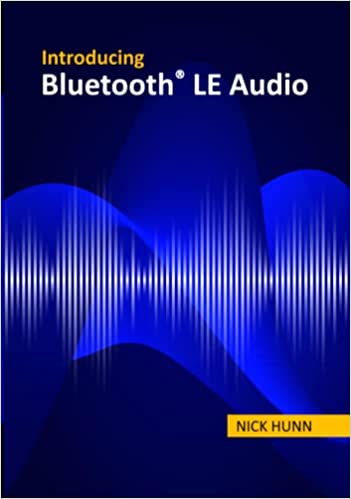The recently released Auracast™ Simple Transmitter Best Practices Guide describes a typical, qualified implementation of a transmitting device to help explain the decision process necessary to meet the AuracastTM broadcast audio requirements. It also provides recommendations for a simple AuracastTM broadcast audio transmitter, using the Public Broadcast Source (PBS) role from the Public Broadcast Profile (PBP) specification.
This best practices guide offers recommendations to assist in the creation of uniform user experiences when using standalone AuracastTM transmitter products.
Below is an excerpt from the Auracast™ Simple Transmitter Best Practices Guide that provides a brief summary of the intended functions of an AuracastTM transmitter.
FEATURED PAPER
Auracast™ Simple Transmitter Best Practices Guide
This paper provides a set of clear, concise, and useful recommendations for product makers interested in building Auracast™ transmitter products.
2.1 AuracastTM Transmitter Types
Auracast™ transmitters are generally classified in two categories:
Public AuracastTM transmitter: A Bluetooth® product capable of transmitting a PBP-compliant standard quality audio broadcast and which is intended for deployment within a public venue, such as commercial public address (PA) systems, televisions, and audio streamers. When set to transmit, the default configuration for a public AuracastTM transmitter must include a Standard Quality Broadcast Audio stream.
Personal AuracastTM transmitter: A Bluetooth® product capable of transmitting a PBP-compliant audio broadcast and which is intended for personal use such as a smartphone, tablet, laptop, PC, home television, or home audio streamer. All personal Auracast™ transmitters are required to be able to transmit a Standard Quality Public Broadcast Audio stream but may default to transmitting a High Quality Public Broadcast Audio stream.
2.2 Physical Implementations
AuracastTM transmitters may be installed by people with a wide range of technical knowledge, from novice to expert. Manufacturers should design AuracastTM broadcast audio products with an understanding of the likely installer so that the end-user experience is the same for anyone listening to an AuracastTM broadcast. A generic out-of-the-box configuration should include enough information to provide a consistent user experience for the intended audience with the ability to tailor it with minimal technical knowledge.
The physical form factor of an AuracastTM transmitter is independent from its function. The AuracastTM transmitter might be a dongle that is plugged into an audio source device, a small box connected with a cable to the output jack of a sound system (as shown in Figure 3.1), or it might be part of a System-on-Chip (SoC) within a consumer electronics device, such as a smartphone, television, or PC.

2.3 Support for Standard Quality Public Broadcast Audio
All Auracast™ transmitters are required to be able to transmit broadcast audio at 16kHz or 24kHz using the LC3 codec [2] [8], which is known as Standard Quality Public Broadcast Audio in the underlying Public Broadcast Profile (PBP) specification. In addition to supporting standard quality, support for 48kHz LC3 audio is permitted, which is known as High Quality Public Broadcast Audio.
As identified by the use of Auracast Trademarks in the Brand Guide for Bluetooth Trademarks [8], for all transmitters, the product must be configurable by the end user to broadcast a Standard Quality Public Broadcast Audio stream. Additionally, if the transmitter is marketed for use within a public location (where “public location” means any public, private, or commercial venue, building, means of transport, or open space), the product’s default setting when configuring the product to transmit an Auracast™ broadcast must be to broadcast a Standard Quality Public Broadcast Audio stream.
The intent of both of these requirements is to increase the likelihood that all products capable of receiving Auracast™ broadcast audio will be able to do so, as some hearing aids may only receive Auracast™ broadcast audio that is configured as a Standard Quality Public Broadcast Audio stream. In practice, what this means is, to support the broadest portfolio of receiver devices in a public location, a Standard Quality
Public Broadcast Audio stream must be made available for all audio content provided through Auracast™ broadcast audio by the location. Because the transmitted standard quality audio stream packets are smaller, they will typically provide slightly better range and robustness to interference compared to high-quality packets.
Personal Auracast™ transmitters may default to transmitting a high-quality audio stream but are required to allow a user to select transmission of a standard-quality audio stream [8]. If a standard-quality audio stream is selected for transmission, the decision whether the standard-quality audio stream is transmitted concurrently with a high-quality audio stream, or is transmitted instead of a high-quality audio stream, is determined by the manufacturer.
The Auracast™ Simple Transmitter Best Practices Guide is not intended to provide an exhaustive description of the underlying Bluetooth® specifications used in the creation of AuracastTM products, rather the goal is to provide a set of clear, concise, and useful recommendations for product makers interested in building AuracastTM transmitter products.
Download the complete Auracast™ Simple Transmitter Best Practices Guide.
![]()
FEATURED PAPER
Auracast™ Simple Transmitter Best Practices Guide
This paper provides a set of clear, concise, and useful recommendations for product makers interested in building Auracast™ transmitter products.




















![2312 CES Handout Images FINAL existing pdf 464x600[1]](https://www.bluetooth.com/wp-content/uploads/2024/01/2312_CES_Handout-Images_FINAL-existing-pdf-464x6001-1.jpg)
















